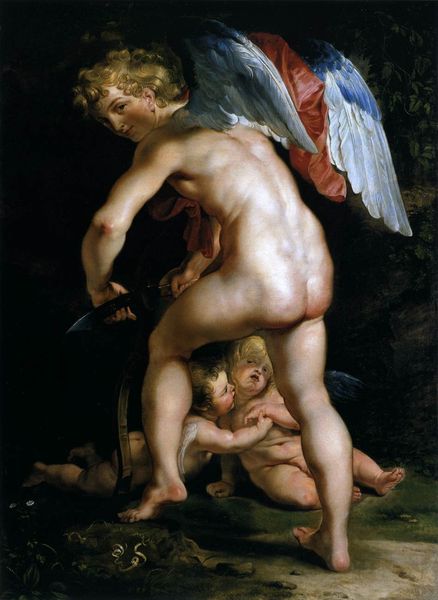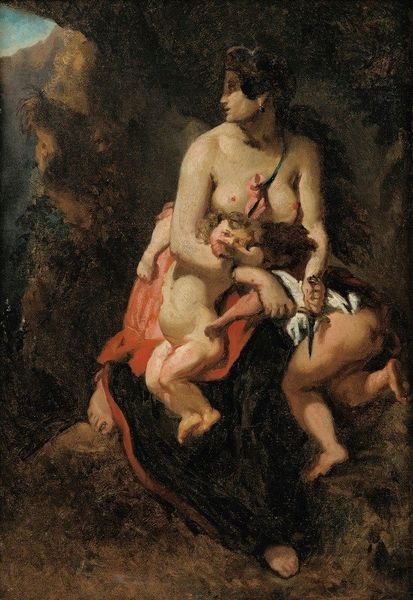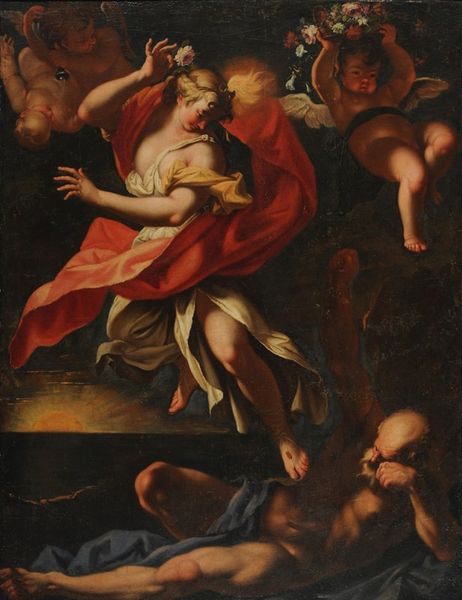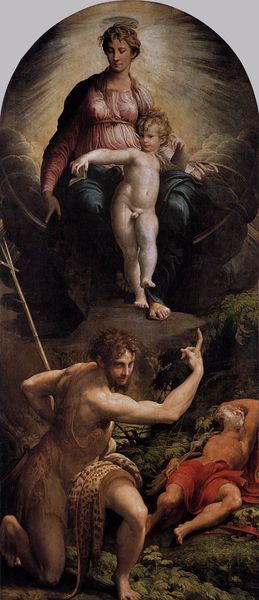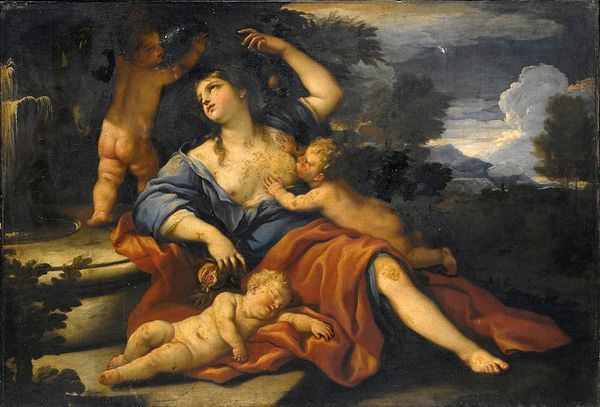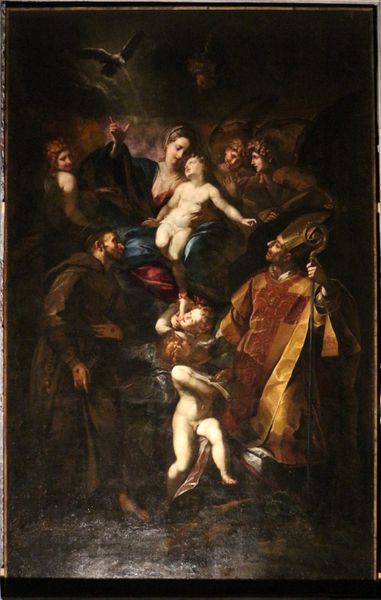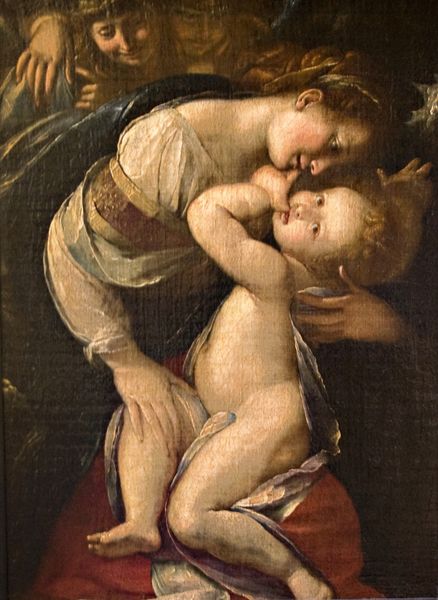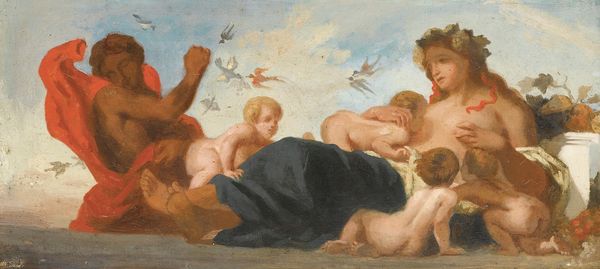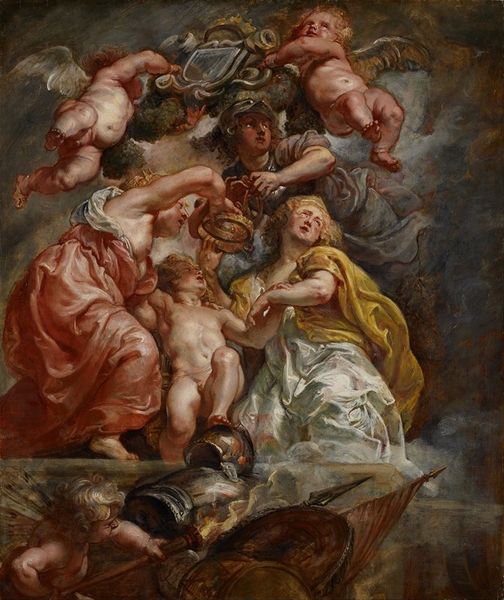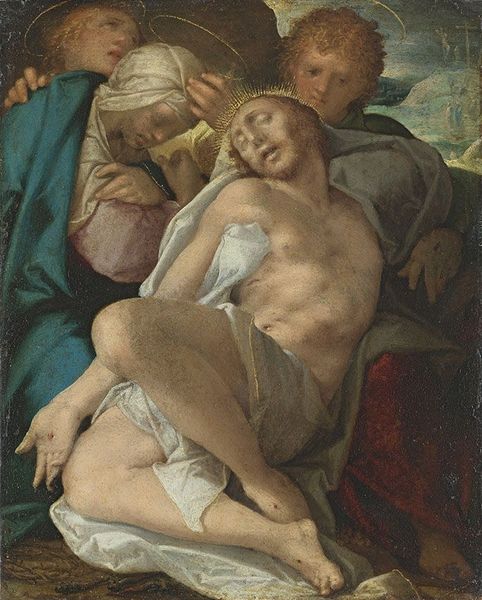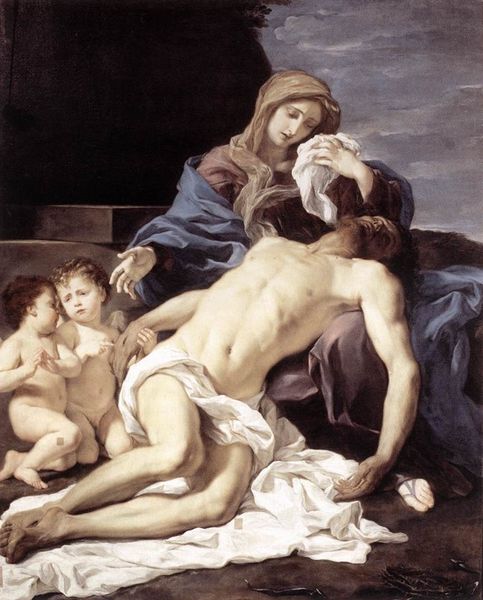
oil-paint
#
allegory
#
oil-paint
#
landscape
#
mannerism
#
figuration
#
oil painting
#
mythology
#
human
#
italian-renaissance
Copyright: Public domain
Curator: Welcome. Before us, we have Adam Elsheimer’s captivating oil painting, "A Witch with Cupids," created around 1598. Editor: My initial reaction? It's unsettling. The dark palette combined with the unsettling depiction of the witch creates a tense, almost suffocating atmosphere. The cupids seem to be suffering, too; this isn't your typical Renaissance scene of love and harmony! Curator: Elsheimer was working at the intersection of mannerism and the burgeoning Baroque style. It’s fascinating to observe how traditional mythological subjects were reinterpreted, moving from idealized forms to portrayals with psychological depth and even a touch of the grotesque. Editor: I agree, and that subversion is exactly what captures my attention. This feels like a powerful statement about the darker sides of desire and power, symbolized, maybe, by a woman not bound by patriarchal restrictions—branded as "witch." What might be happening to the children, and who would depict that for the public's consumption? Curator: These images circulated in elite circles. The allegory is rooted in classical mythology, referencing Circe and her ability to transform men with potions, which the witch clearly still does. The cupids may show the perversions or the negative influences of love. Editor: Right, because, of course, attributing negativity to uncontrolled female influence makes so much sense given the prevalent historical biases of art. So, this "grotesque" woman challenges those very constraints. Elsheimer probably just intended it as a fantastical story but he created space for discussions about forbidden knowledge, marginalized figures, and the dangers ascribed to female autonomy. Curator: It is thought-provoking to examine its cultural implications within a historical framework that either condemns female figures to caricatures or tries to erase women. Editor: I find this particular artwork especially powerful. It serves as a reminder to deconstruct ingrained perspectives. Curator: Indeed. A work that still evokes feelings of social change today. Editor: Absolutely. These complexities are important because they enable discourse. Curator: We hope you have found our different analyses insightful.
Comments
No comments
Be the first to comment and join the conversation on the ultimate creative platform.

